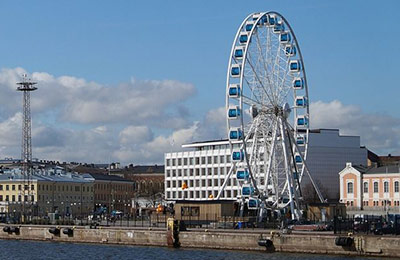Finland’s six largest cities open their data resources to create a shared open data system that utilises mutually agreed to and developed operational models, publishing platforms and license models.
Making our open data your business in Finland
- 26 October 2017
With the help of 6Aika city content, we built a great event management platform that we now license to our customers. LinkedEvents API is great! I would love other European cities to be in the same forefront.
Helsinki, Espoo, Vantaa, Tampere, Turku and Oulu – these are Finland’s six biggest cities and home to 30 % of the country’s population. Although each of these individual cities has extensive amounts of data that could be useful to businesses, citizens and all kinds of civic organisations, the challenge is to establish ways to get this data distributed in a secure and useful manner.
Furthermore, when cities do open their datasets, they seldom use a common data model or standards for publishing the data. This results in a situation even though several of these cities have opened the same data, it isn’t compatible because each city is using a different model.
As part of the larger 6Aika – The Six City Strategy, the Open Data and Interfaces Spearhead Project brings these six cities together to create common solutions for:
speeding up data driven businesscreating common data models and harmonised application programming interface (APIs) – protocols to aid communication between two software programsusing open data as part of normal city functions.Improving data quality
This project set out with the aim of increasing the amount of open datasets in Finland, thus helping these cities improve data quality and open their public data in a machine-readable format. By creating common data models and harmonising APIs between cities, the project encouraged the six cities to share their best practices and mutually agree on which data models and standards they will use for open datasets.
From this effort, a sustainable clearinghouse of processes for open data was created in each city. Through open data catalogues and an easy-to-navigate technical infrastructure, the overall quality of and access to open data improved substantially. The project also created and documented such best practices in open data-related issues as using open data in procurements, harmonising open APIs and recommendations for APIs.
Increasing use of open data
When common data models are used, businesses can easily support multiple cities with a single application, thus attracting more potential customers and further growing their business. To facilitate this, the project also focused on increasing the use of open data.
The key here was to encourage businesses to utilise open data and APIs. Finding that there were relatively little business applications on open data, the project worked to accelerate open data businesses. This was done by creating solutions for open data business requirements like data quality and service-level agreement challenges. The project also provided training to companies working with open data, geographic information system data and data analytics, providing information on what open data is, the kind of data that is available and how it can be used in their applications and business models.
Opening up possibilities
The project successfully harmonised open data models and APIs between the six Finnish cities, increased the amount of open data sources and raised the overall quality of the available open data. Specific accomplishments include the creation of four harmonised APIs for cities and scalable open data portals for data owners to implement and replicate.
Because of this work, these six cities now enjoy a wider market for applications and services built on open data. There is also an increased awareness about open data within companies and businesses are better-positioned to utilise and create new services based on data sources.
Total investment and EU funding
Total investment for the project “6Aika, the six-city project (6Aika-hanke) (spearhead project and pilot project)” is EUR 8 100 100 with the EU’s European Regional Development Fund contributing EUR 3 409 183 through the “Sustainable growth and jobs 2014-2020 - Structural Funds Programme of Finland” Operational Programme for the 2014-2020 programming period.

